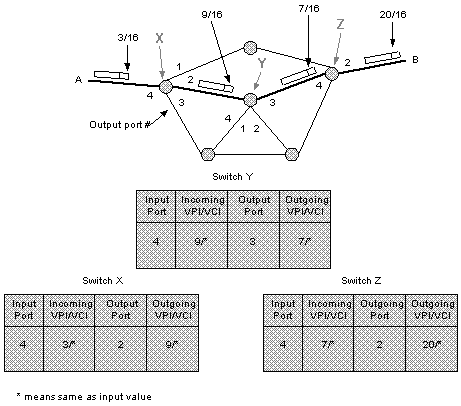
An ATM switch transports cells from the incoming links to the outgoing links, using information from the cell header and information stored at the switching node by the connection setup procedure. The connection setup procedure performs the following tasks:
Defines a unique connection identifier (a VPI and VCI) for each connection at the incoming link and link identifier, and a unique connection identifier at the outgoing link.
Sets up routing tables at each switching node to provide an association between the incoming and outgoing links for each connection.
As mentioned previously, virtual path identifier (VPI) and virtual circuit identifier (VCI) are the connection identifiers used in ATM cells. To uniquely identify each connection, VPIs are uniquely defined at each link, and VCIs are uniquely defined at each VP. To establish an end-to-end connection, a path from source to destination has to be determined first. Once the path has been established, the sequence of links to be used for the connection and their identifiers are known.
VPIs are used to reduce the processing of an ATM switch by routing on the VPI field only. For example, VPI routing is useful when many VCs share a common physical route (similar to all phone connections between Seattle and Chicago). The following graphic provides an example of VPI routing.
